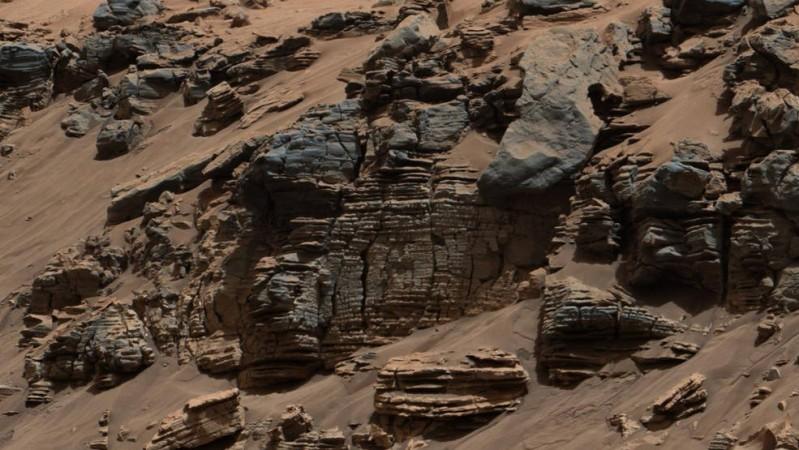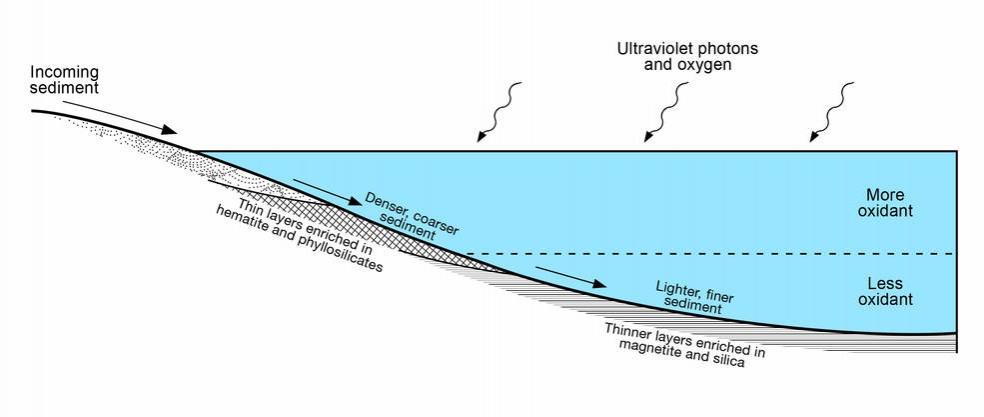
A new discovery has been made by NASA's Curiosity rover mission regarding an ancient Martian lake which might have been habitable billion of years ago.
Also Read: Is Moon habitable? NASA's LRO discovers water ice on the lunar surface's south pole
Once upon a time, a huge lake existed in a Martian crater which could have resulted in a boom of the population of diverse microbial life, according to researchers.
Only microbes are believed to exist in the Martian lake which was present in Mars' Gale Crater more than 3.5 billion years ago. This seems to be a great step towards understanding the habitability of Mars.

This research led to the understanding of the chemical conditions which prevailed in the lake, Curiosity's payload was used to find that the lake was stratified.
The layered bodies of water portray sharp chemical or physical differences between deep water and shallow water. It was found the deeper water in Gale's lake was richer in oxidants than the deeper water.
"These were very different, co-existing environments in the same lake," said Joel Hurowitz of Stony Brook University, Stony Brook, New York and lead author of a report of the findings in the June 2 edition of the journal Science.
"This type of oxidant stratification is a common feature of lakes on Earth, and now we've found it on Mars. The diversity of environments in this Martian lake would have provided multiple opportunities for different types of microbes to survive, including those that thrive in oxidant-rich conditions, those that thrive in oxidant-poor conditions, and those that inhabit the interface between those settings."
It's still a mystery if Mars was ever habitable, but reconstructing the environment could help in finding out whether the planet ever supported life.
The main aim of the Curiosity rover when I landed inside the Gale Carter in 2012 was to find out if Mars ever possessed any environmental conditions which supported microbial life.
In its first year, on the crater floor at "Yellowknife Bay," the rover found evidence of ancient freshwater river and lake environments with all the main chemical ingredients for life and a possible energy source for life. Curiosity has since driven to the base of Mount Sharp, a layered mountain inside the crater, and inspected rock layers that grow progressively younger as the rover gains elevation on lower Mount Sharp.
The rover team was puzzled at seeing the varying physical, chemical and mineral characteristics of numerous sites present in the lower Mount Sharp.
Some of the rocks were thickly layered and comprised of a higher proportion of iron mineral –hematite, other finely layered rocks contained more of an iron mineral called magnetite. Finding these properties pointed towards very distinctive environments of deposition, as per a NASA statement.
The astronomers considered if the altering environmental conditions over time or place to place led to these differences.
"We could tell something was going on," Hurowitz said. "What was causing iron minerals to be one flavour in one part of the lake and another flavour in another part of the lake? We had an 'Aha!' moment when we realised that the mineral information and the bedding-thickness information mapped perfectly onto each other in a way you would expect from a stratified lake with a chemical boundary between shallow water and deeper water."
Apart from revealing new details about the chemical conditions prevailing within the lake, the report by Hurowitz and 22 other co-authors also documents the fluctuations in the climate of ancient Mars.
A similar change happened between the time when the crater-floor rocks were deposited and the time the rocks that now make up the base of Mount Sharp were deposited. The later rocks are exposed at "Pahrump Hills" and elsewhere.
Researchers used a method for investigating the changes in the ancient climate conditions on the Red Planet is similar to how ice cores are used to analyse the past temperature conditions on Earth. These findings are based on comparing the differences in the chemical compositions of layers of mud-rich sedimentary rock that were deposited in the lake.

It was found that the climate conditions transformed from colder and drier to warmer and wetter. These short-term fluctuations in climate took place within a longer-term climate evolution from the ancient warmer and wetter conditions that supported lakes, to today's arid Mars.
"These results give us unprecedented detail in answering questions about ancient environmental conditions on Mars," said Curiosity Project Scientist Ashwin Vasavada of NASA's Jet Propulsion Laboratory, Pasadena, California.
"I'm struck by how these fascinating conclusions on habitability and climate took everything the mission had to offer: a set of sophisticated science instruments, multiple years and miles of exploration, a landing site that retained a record of the ancient environment, and a lot of hard work by the mission team," Vasavada added.
The higher and younger layers of Mount Sharp is still being studied in the mid-2017 to examine how the ancient lake environment transformed to a drier environment more like modern Mars.
These robotic explorations aim at understanding the Red Planet better which would help in establishing the human colonisation of Mars in 2030s.














